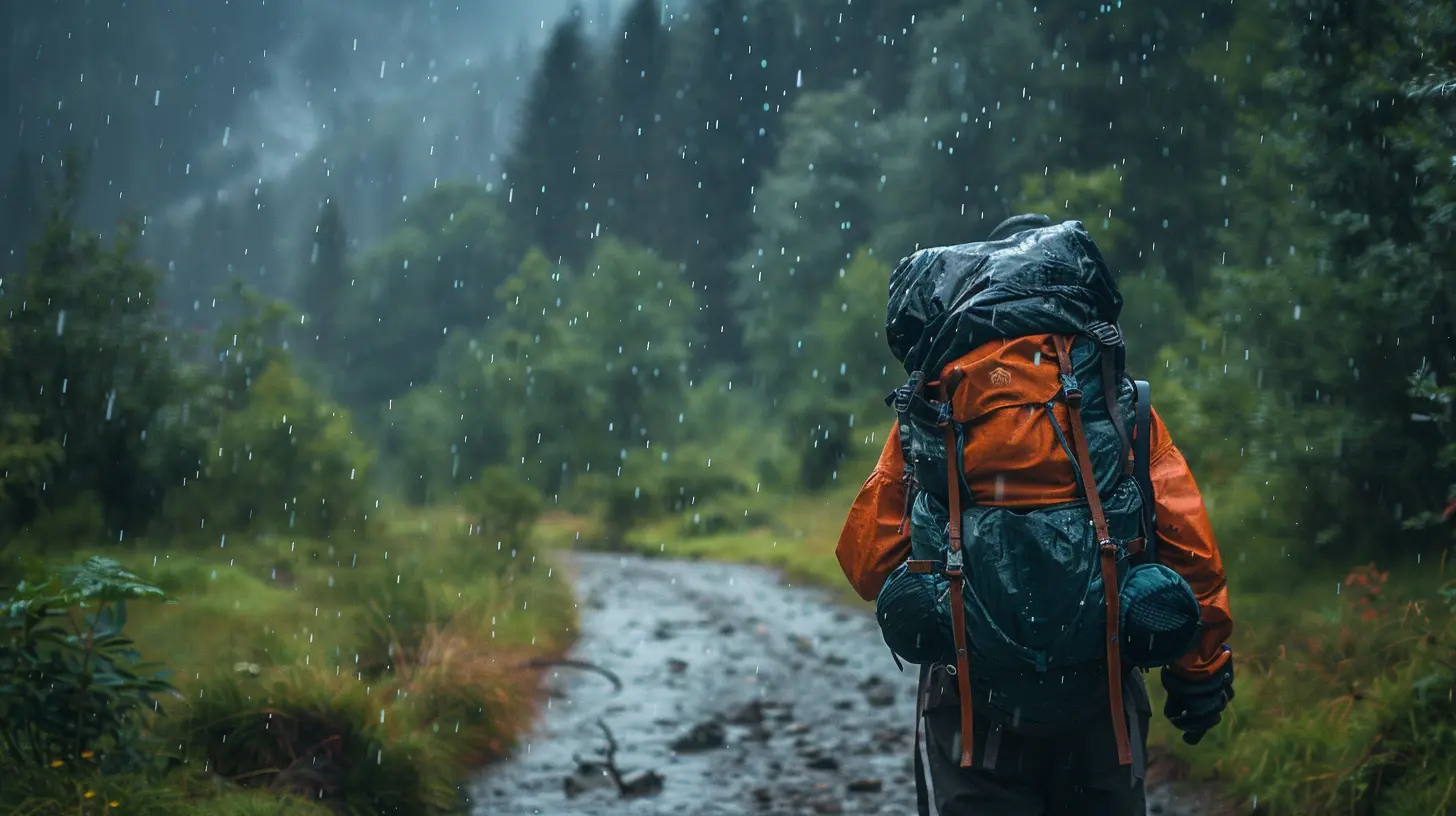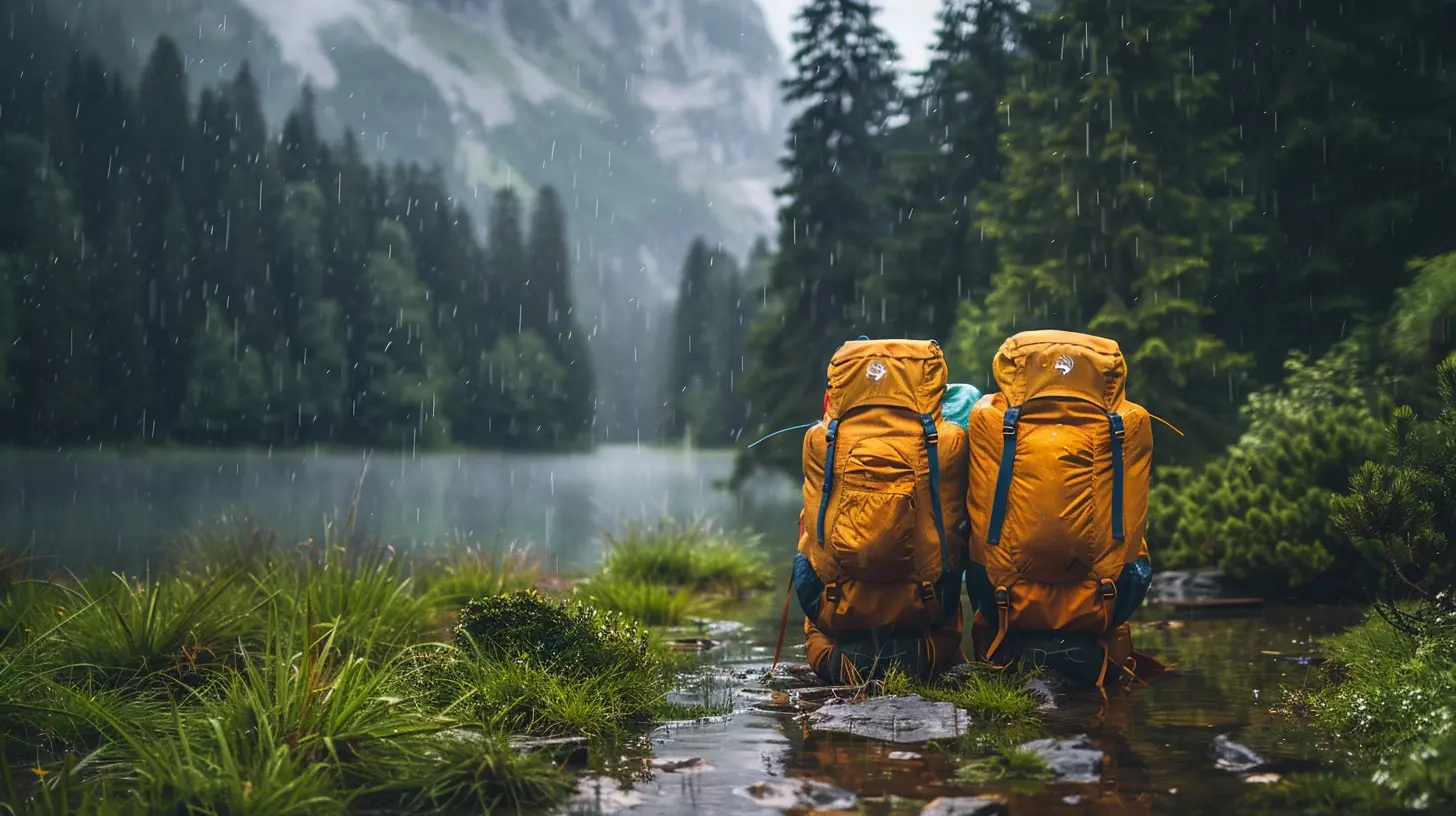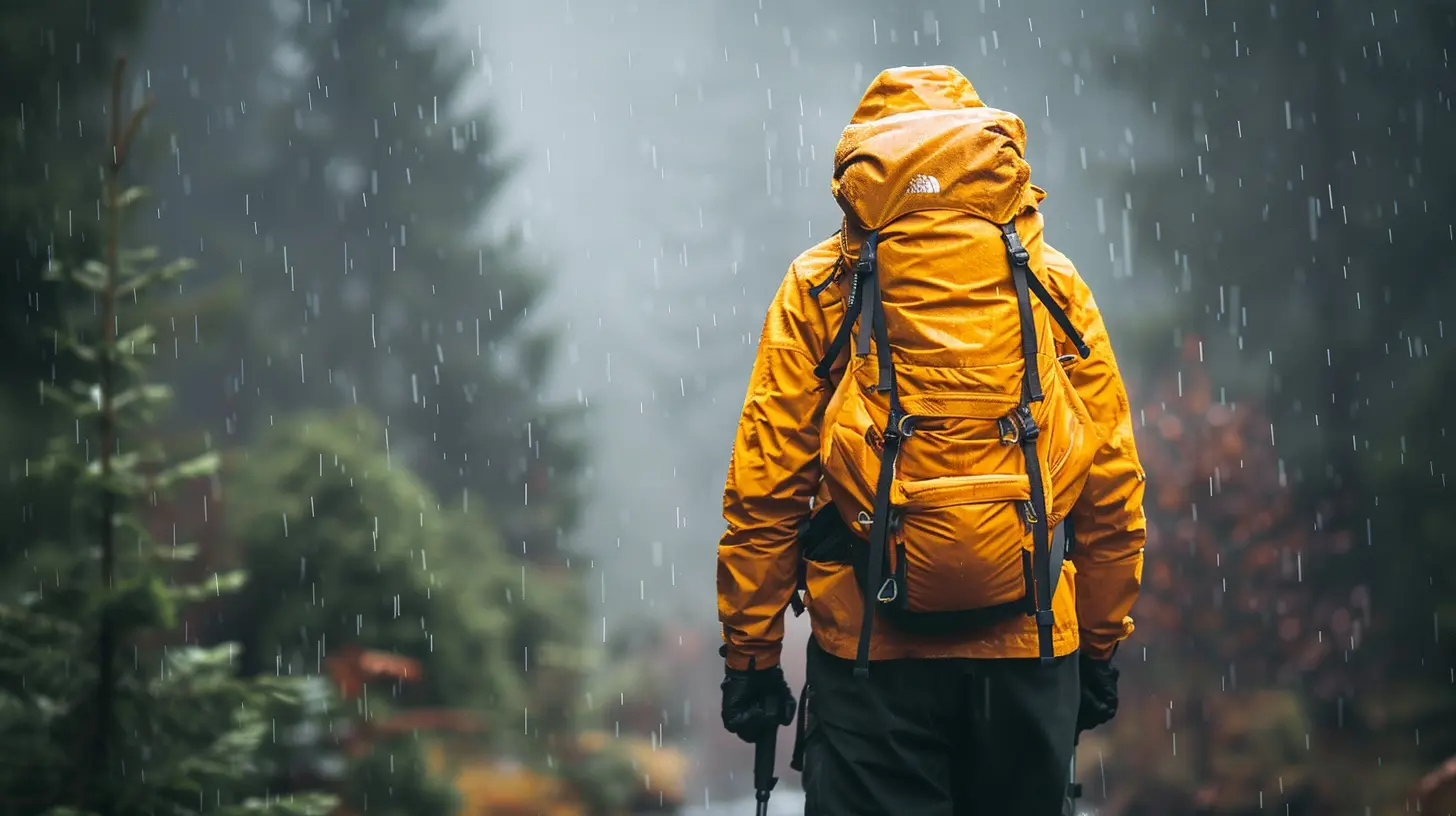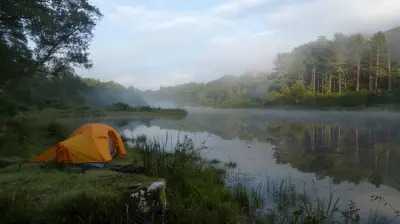Packing Smart for Wet Conditions: Backpacking in Rainy Climates
30 May 2025
Backpacking in rainy climates can be an unforgettable adventure—lush greenery, misty mornings, and the rhythmic sounds of raindrops against your tent. However, it also comes with challenges. Wet gear, damp clothes, and soggy socks can quickly turn an exciting trip into a miserable one. The key? Packing smart.
Whether you're trekking through the Pacific Northwest, exploring the Amazon Rainforest, or hiking in the Scottish Highlands, proper preparation can keep you comfortable and dry. Let's break down everything you need to know to pack efficiently for backpacking in wet conditions.

The Golden Rule: Stay Dry, Stay Happy
Wet clothes aren't just annoying—they can be dangerous. Hypothermia can set in even in moderate temperatures if you're damp and exposed to wind. Keeping yourself and your gear dry is essential for both comfort and safety.
1. Choosing the Right Backpack
Your backpack is your lifeline on the trail, so picking the right one is crucial.- Waterproof vs. Water-Resistant: A truly waterproof pack is rare, but many quality backpacks come with water-resistant materials and sealed zippers.
- Built-in Rain Cover: Some backpacks include rain covers, but if yours doesn’t, invest in one. A snug fit ensures water stays out.
- Pack Liner & Dry Bags: Even with a rain cover, water can seep in. Use a heavy-duty trash bag or a waterproof pack liner inside your backpack. Additionally, pack essentials like clothes and electronics in dry bags or Ziploc bags for an extra layer of protection.

2. Clothing: Layer Like a Pro
Packing clothes for wet conditions is about more than just bringing a rain jacket. It's about selecting the right fabrics and layering properly.Base Layer (Moisture-Wicking & Quick-Drying)
Ditch the cotton—it holds moisture and takes forever to dry. Instead, opt for synthetic fabrics like polyester or merino wool, which wick sweat away from your skin and dry quickly.Mid-Layer (Insulation & Warmth)
Think of this as your heat trap. A fleece or lightweight down jacket will keep you warm, even if it gets damp.Outer Layer (Waterproof & Breathable)
Your rain gear is your armor against the elements. Look for:- A high-quality rain jacket with sealed seams and ventilation zippers.
- Rain pants to keep your legs dry in heavy downpours or when pushing through wet underbrush.
- A wide-brimmed hat or a waterproof cap to keep rain out of your face.
3. Footwear: Keeping Your Feet Dry
Wet feet are a backpacker’s worst nightmare—blisters, trench foot, and discomfort can quickly ruin a trip.- Waterproof Hiking Boots: Opt for boots with a Gore-Tex or similar waterproof lining. Make sure they fit well and are broken in before your trip.
- Gaiters: These act as a shield over your boots, keeping water, mud, and debris out.
- Wool Socks: Again, avoid cotton. Wool socks insulate even when wet and dry faster. Packing extra pairs is a must.
- Camp Shoes: Lightweight sandals or waterproof slip-ons make for a great backup when you want to give your feet a break in camp.
4. Shelter: A Dry Haven in the Rain
Your sleeping arrangements should be designed to keep you dry and comfortable.- Tent Selection: Choose a high-quality, waterproof tent with a full-coverage rainfly and well-sealed seams.
- Footprint or Groundsheet: A tent footprint protects against moisture soaking up from below.
- Ventilation: Condensation build-up inside your tent is a real issue in humid, rainy conditions. Crack open a vent or door when possible for airflow.
5. Packing Smart: Keeping Gear & Essentials Dry
Dry Bags
These are lifesavers for keeping critical gear like electronics, clothes, and food moisture-free.Ziplock Bags
Perfect for maps, matches, your phone, and any small items you need to keep dry.Waterproof Notebook & Pen
If you like journaling your adventure or need to jot down important notes, go for waterproof paper and pens that won’t bleed when wet.6. Cooking & Meal Planning in Wet Conditions
Cooking in rainy conditions comes with its own challenges, so plan ahead.- Lightweight Stove: A small gas stove with a windscreen helps ignite flames easily.
- Quick-Cook Meals: Instant meals, dehydrated food, and no-cook snacks reduce the need to struggle with cooking in bad weather.
- Waterproof Matches & Lighter: Keep them in a waterproof case or bag to avoid frustration when you need a flame.
7. Navigating in Wet Weather
Maps and electronics are vulnerable to moisture, so take precautions.- Waterproof Map Case: Protects your map and allows you to read it without unfolding it in the rain.
- GPS & Compass: A GPS device can be useful, but always carry a compass as backup in case electronics fail.
8. Mental Preparation: Embracing the Rain
Backpacking in the rain requires a certain mindset.- Accept the Rain: If you're constantly worrying about getting wet, you’ll have a miserable time. Accept that you’ll get damp at some point and focus on managing it rather than fighting it.
- Take Breaks Strategically: Find overhangs or tree cover to rest, eat, and adjust gear when needed.
- Stay Positive: Rain brings vibrant landscapes, fewer crowds, and a unique adventure you wouldn’t get on a sunny day.
9. Post-Trip Care: Drying & Maintaining Your Gear
When you return from your trip, don’t just toss your gear into storage.- Dry Everything Thoroughly: Set up your tent, hang your sleeping bag, and air-dry your backpack to prevent mold and mildew.
- Clean & Waterproof Gear: Reapply waterproof treatments to your boots and rain gear if needed.

Conclusion
Backpacking in rainy climates isn’t about avoiding the rain—it’s about outsmarting it. With the right gear, a smart packing strategy, and a positive mindset, you can turn a wet-weather adventure into an incredible experience. So throw on that rain jacket, tighten your backpack straps, and embrace the adventure. After all, some of the best stories come from the wettest trails!all images in this post were generated using AI tools
Category:
BackpackingAuthor:

Kelly Hall
Discussion
rate this article
3 comments
Natalia McMaster
Great tips! I suggest adding lightweight waterproof bags for electronics and important documents. Staying organized can really enhance the experience when backpacking in rainy conditions!
June 16, 2025 at 4:13 AM

Kelly Hall
Thank you for the suggestion! Lightweight waterproof bags are a valuable addition for keeping electronics and documents safe and organized during wet conditions.
Peyton McVey
Pack like a pro and dance through puddles! Remember, even raindrops can’t dampen your adventure—unless you forget the waterproof snacks. Happy soggy trails!
June 4, 2025 at 3:30 PM

Kelly Hall
Thanks for the fun reminder! Waterproof snacks are a must for those soggy adventures. Happy trails to you too!
Kiera McGowan
Remember, if your backpack isn't waterproof, you're just carrying a mobile water feature! Embrace the rain like a duck; quack your way to adventure and don't forget the extra socks!
June 1, 2025 at 3:46 AM

Kelly Hall
Absolutely! Embracing the rain is part of the adventure, and extra socks are a must! Stay dry and carry on! 🦆🌧️



